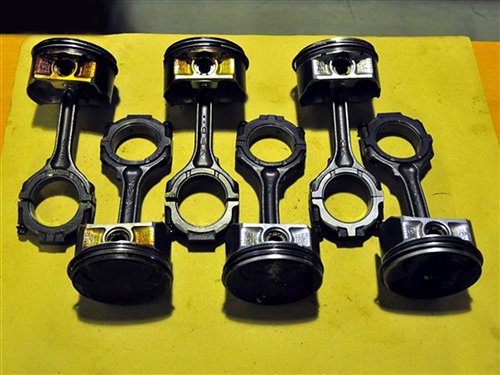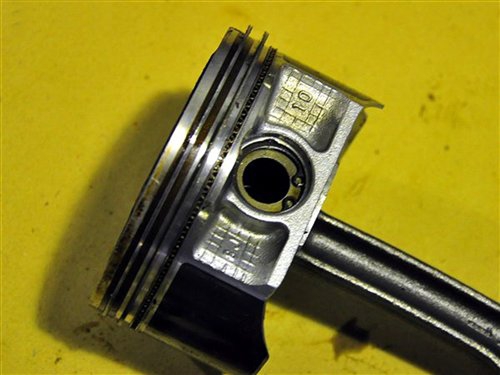Engines are like ‘heart’ of cars and the piston can be understood as the ‘center pivot’ of engine. The inside of the piston is hollow-out design which likes a hat, the round holes at both ends are connected to the piston pin, the piston pin is connected to the small end of the connecting rod, and the big end of the connecting rod is connected to the crankshaft, which converts the reciprocating motion of the piston to the circular motion of the crankshaft.

The working condition
The working condition of the pistons is very bad. Pistons work under high temperature, high pressure, high speed and poor lubrication conditions. The piston is directly in contact with high-temperature gas, and the instantaneous temperature can reach more than 2500K. Therefore, the piston is severely heated and the heat dissipation condition is very poor. As result, the pistons work at a very high temperature, with the top reaching 600 ~ 700K, and the temperature distribution is very uneven.
The piston top bears great gas pressure, especially during the working, which is as high as 3 ~ 5MPa for gasoline engines and 6 ~ 9MPa for diesel engines. This makes pistons producing impact and bearing the effect of side pressure. The piston moves back and forth in the cylinder at a high speed (8 ~ 12m/s), and the speed is constantly changing. This creates a great inertia force, which makes the piston subject to a great amount of additional load. Working under these harsh conditions makes the pistons deforming and making wear and tear of pistons accelerating, as well as generating additional loads and heat stress and being subjected to chemical corrosion by gas. A piston with a diameter of 90 mm, for example, would bear about three tons of pressure. In order to reduce the weight and inertia force, the piston is generally made of aluminum alloy, some racing pistons are forged which makes them strong and durable.
Excepting extreme working conditions, it is one of the most busy in the engine. Its top ,cylinder head and cylinder barrel constitute the combustion chamber. And it also plays a role to inhale, compress and exhaust gas.

Piston rings
Each piston has three wrinkles for the installation of two air rings and an oil ring and air rings are on the top. During assembling, the openings of the two air rings should be staggered to serve as seals. The main function of the oil ring is to scrape off the excess oil splashed on the cylinder wall and to make it even. At present, the widely used materials of piston rings include high quality gray cast iron, ductile cast iron, alloy cast iron and so on.
In addition, due to different locations of piston rings, the surface treatments are also different. The outside surface of first piston ring is usually chrome-plated or molybdenum spraying treatment, mainly in order to improve lubrication and wear resistance. Other piston rings are usually tin-plated or phosphated to improve wear resistance.
Post time: Jul-16-2020
